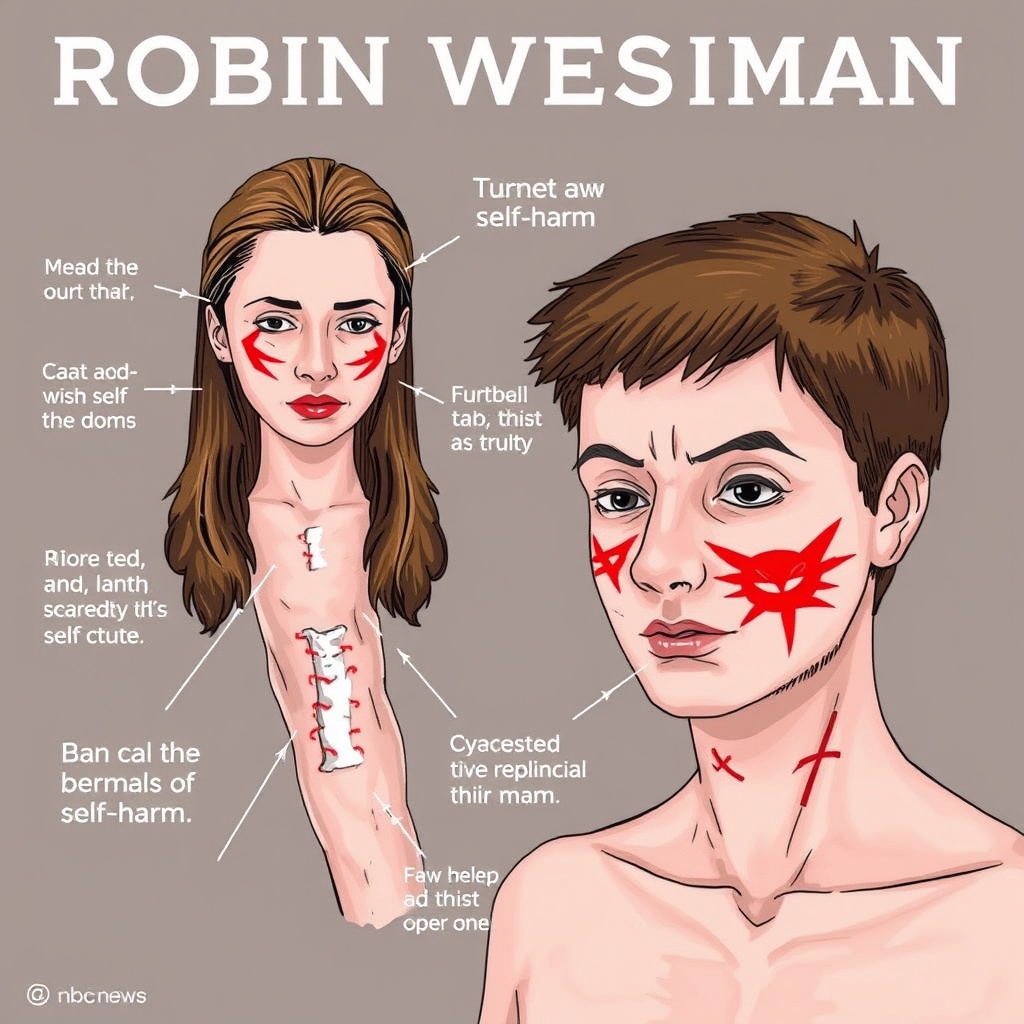Introduction
The recent shooting at Annunciation Catholic Church has left the community in shock and raised concerns about the warning signs that may have been missed. One such sign has come to light through the account of a former teacher who claims that the shooter, Robin Westman, displayed signs of self-harm during his time at a prep school. This revelation has sparked a broader conversation about the importance of recognizing and addressing mental health issues, particularly in young people. In this article, we will delve into the details of Westman's case, explore the signs of self-harm that were allegedly observed, and examine the implications for mental health support and intervention.
Recognizing Signs of Self-Harm
Self-harm, also known as self-injury, is a behavior where an individual intentionally harms their own body, often as a coping mechanism for emotional pain or distress. The signs of self-harm can be subtle and may not always be immediately apparent, but they can include unexplained injuries, such as cuts or bruises, wearing long sleeves or pants in warm weather to conceal injuries, and changes in behavior or mood. In the case of Robin Westman, his former art teacher reported noticing signs of self-harm in 2017, when he was a student in her class. The teacher's account highlights the importance of educators and other adults being aware of the warning signs of self-harm and knowing how to respond appropriately.
According to the teacher, Westman's behavior and appearance raised concerns about his well-being. The teacher's observations are a reminder that self-harm can affect anyone, regardless of their background or circumstances. The National Alliance on Mental Illness (NAMI) reports that approximately 1 in 5 teens experience self-harm, with the majority of cases going unreported. The reasons behind self-harm can be complex and varied, but common factors include emotional regulation, trauma, and low self-esteem. Recognizing the signs of self-harm is crucial, as it can be a precursor to more severe mental health issues, such as depression, anxiety, or suicidal ideation.
The Importance of Early Intervention
Early intervention is critical in addressing self-harm and other mental health concerns. When signs of self-harm are recognized, it is essential to respond with compassion and understanding, rather than judgment or punishment. This can involve referring the individual to a mental health professional, such as a therapist or counselor, who can provide a safe and supportive environment to explore the underlying issues. In the case of Robin Westman, it is unclear whether his signs of self-harm were addressed or reported to the relevant authorities. However, the incident highlights the need for schools and other institutions to have protocols in place for identifying and responding to mental health concerns.
The benefits of early intervention are well-documented. According to the National Institute of Mental Health (NIMH), early treatment can significantly improve outcomes for individuals experiencing mental health issues. This can involve a range of strategies, including therapy, medication, and lifestyle changes. Moreover, early intervention can also help prevent more severe mental health issues from developing, reducing the risk of long-term consequences, such as substance abuse or suicidal behavior. By prioritizing mental health support and intervention, we can work towards creating a safer and more supportive environment for all individuals, particularly young people who may be struggling with self-harm or other mental health concerns.
Breaking the Stigma Surrounding Mental Health
The case of Robin Westman also underscores the need to break the stigma surrounding mental health. Mental health issues, including self-harm, are often shrouded in secrecy and shame, preventing individuals from seeking help or disclosing their struggles. This stigma can be particularly damaging, as it can prevent individuals from accessing the support and resources they need to recover. By promoting a culture of openness and understanding, we can encourage individuals to speak freely about their mental health concerns, without fear of judgment or rejection.
Breaking the stigma surrounding mental health requires a multifaceted approach. This can involve education and awareness campaigns, which aim to promote a better understanding of mental health issues and reduce misconceptions. It can also involve advocacy and policy changes, which seek to improve access to mental health services and reduce barriers to care. Moreover, breaking the stigma surrounding mental health requires a fundamental shift in our societal attitudes, from one of shame and secrecy to one of compassion and support. By working together to promote a culture of understanding and acceptance, we can help create a more supportive environment for individuals experiencing mental health issues, including self-harm.
Conclusion
The case of Robin Westman serves as a poignant reminder of the importance of recognizing and addressing mental health concerns, particularly in young people. The signs of self-harm that were allegedly observed by his former teacher highlight the need for educators and other adults to be aware of the warning signs and know how to respond appropriately. By prioritizing early intervention, breaking the stigma surrounding mental health, and promoting a culture of openness and understanding, we can work towards creating a safer and more supportive environment for all individuals. As we move forward, it is essential to remember that mental health support and intervention are critical components of a compassionate and equitable society. By working together to address these issues, we can help prevent tragedies like the Annunciation Catholic Church shooting and promote a brighter, more hopeful future for all.


Leave a comment